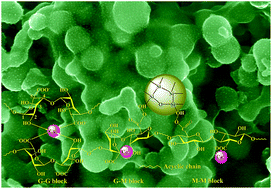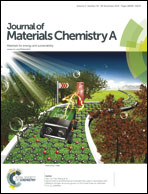A coordinatively cross-linked polymeric network as a functional binder for high-performance silicon submicro-particle anodes in lithium-ion batteries†
Abstract
Silicon offers an extremely high theoretical specific capacity, but suffers from dramatic volume change during lithiation/delithiation processes, which typically leads to rapid anode degradation. Here we designed a facile and self-assembly strategy to construct a three-dimensional (3D) polymeric network as a promising binder for high-performance silicon submicro-particle (SiSMP) anodes through in situ interconnection of alginate chains by additive divalent cations. The highly cross-linked alginate network exhibits superb mechanical properties and strongly interacts with SiSMPs, which can tolerate the volume change of SiSMPs and restrict the volume expansion of the laminates to a large degree, thus effectively maintaining the mechanical and electrical integrity of the electrode and significantly improving the electrochemical performance. As a result, SiSMPs with a 3D binder network exhibit high reversible capacity, superior rate capability and much prolonged cycle life. Additionally, the 3D alginate binder was also successfully applied for the industrial submicro-silicon waste from solar cell production. With all of the advantages, the innovative way to tolerate the severe volume change by using a high-strength polymeric network may open a new approach to realize the industrial application of Si-based anodes in lithium-ion batteries.


 Please wait while we load your content...
Please wait while we load your content...